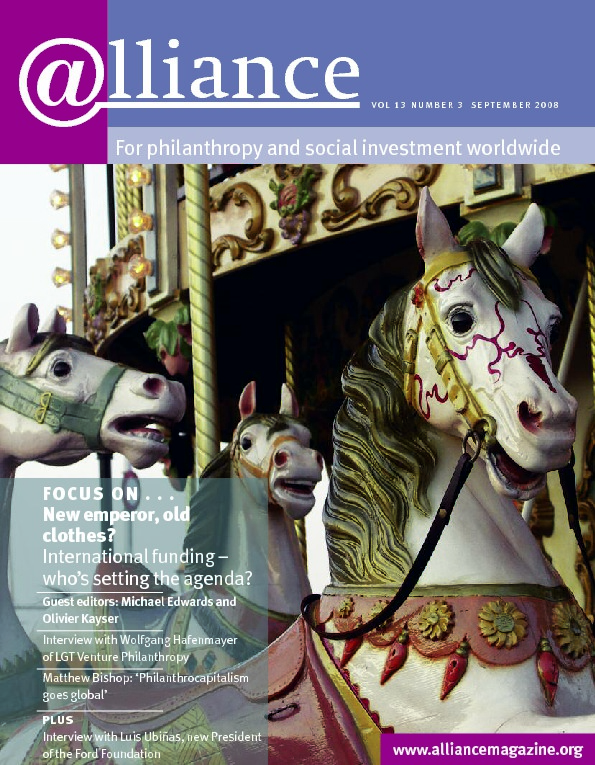Gerry Salole, Chief Executive of the European Foundation Centre, has repeatedly spoken of the importance of telling stories of foundations’ work for society and of their founders. The editors of this excellent contribution to the literature on foundations have taken Salole’s idea and put together a comprehensive picture of foundations in Europe. The book comprises profiles of 13 European foundations and six essays looking at the roles, actual and potential, of foundations across the continent.
The editors’ very informative introduction sets out a classification of four different kinds of civil society – the Anglo-Saxon, the Rhine, the Latin/Mediterranean and the Scandinavian models. This classification forms the basis for exploring foundations’ diversity and the different socioeconomic and cultural contexts in which they operate as well as providing the background to the philanthropic impulse in different countries.
The editors also discuss briefly the challenges and opportunities facing European foundations, so introducing the themes of the essays. What is a foundation? This central question needs to be answered to defend the position of the foundation sector. A European foundation statute will hopefully help in defining the concept. In his essay, Gerry Salole outlines the advantages of creating a European statute and points out some of the risks attendant on not doing so. I believe that such a statute would be a very welcome step, but we should also take into account the possibility of increasing regulation by the European Union in future.
Wilhelm Krull writes on the possibilities of foundations funding research and also points out the need to do this effectively. He cites excellent examples of foundation-financed institutions, including the Institutes of Advanced Study, the Central European University and the European Foreign and Security Policy Studies network. It is often stated of foundations that they can act freely, flexibly and quickly. He notes that while in theory foundations can act freely, flexibly and quickly, in practice they often don’t. He lists seven things to be considered when a foundation establishes a true culture of creativity, a very welcome working plan.
Caroline Hartnell’s essay on foundations’ support for civil society and Diana Leat’s essay on foundations and policy influence in Europe make very interesting reading. Hartnell elaborates on the theme of diversity, showing how differently foundations support the civil society and philanthropy infrastructure. Leat looks at European foundations’ engagement in policy change, showing the huge differences between European foundations. She discusses the attitudes and arguments of foundations for and against policy engagement very well. Her essay, I think, should be the start of wider discussion within foundation boards.
Maximilian Martin’s interesting essay compares European foundations’ assets and spending to those of US foundations. His comprehensive discussion of investment policies provides much food for thought within foundation boards about combining investment and mission.
There are numerous books published on significant donors and foundation profiles, mostly on a national basis. This extremely readable collection of profiles and essays succeeds in illustrating the variety of historical backgrounds and methodologies to be found among foundations in Europe, as well as the geographical spread.
The selection, however, includes only one from the Scandinavian countries, which have firm foundation traditions – though the inclusion of a Turkish foundation, with an essay by Filiz Bikmen on the history of philanthropy in Turkey, is an excellent idea. All in all, the profiles endorse the work of foundations and also show how they have been able to adapt their original purposes to changing contexts.
One of the main purposes of the book is to show the dynamism of the foundation sector. Without this dynamism, foundation activities would stagnate. This collection of essays should be known in every foundation to inspire their strategic thinking. Foundations have a unique opportunity to be leading actors within civil society and they should not miss it.
Paavo Hohti is Managing Director of the Council of Finnish Foundations. Email paavo.hohti@saatiopalvelu.fi
Philanthropy in Europe: A rich past, a promising future
Norine MacDonald and Luc Tayart de Borms (eds) Alliance Publishing Trust
ISBN 9780955880407
To order
Copies are available from APT or EFC.
Email publishing@alliancemagazine.org or efc@efc.be



Comments (0)